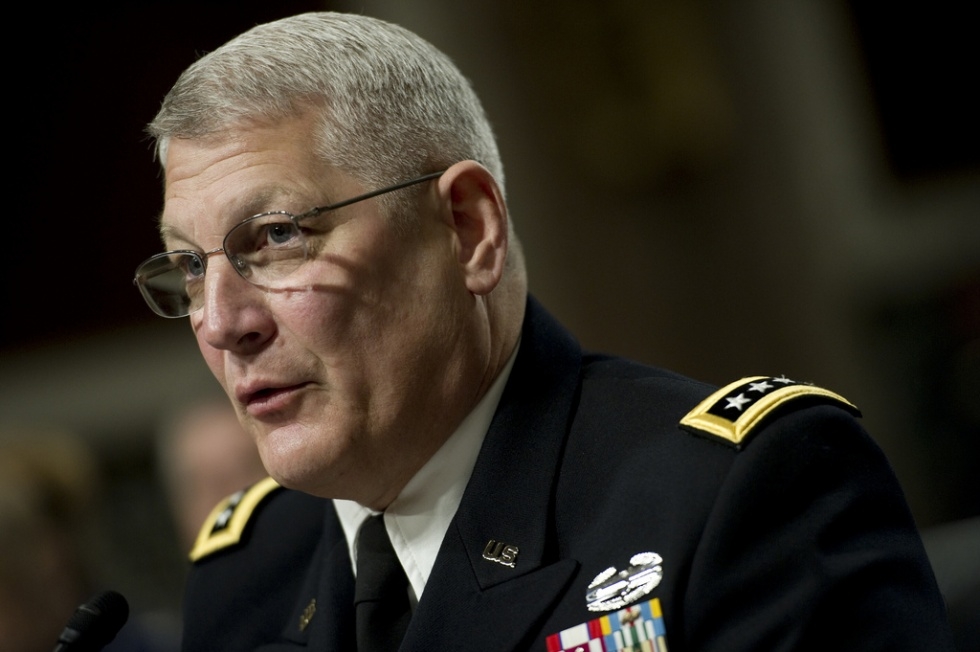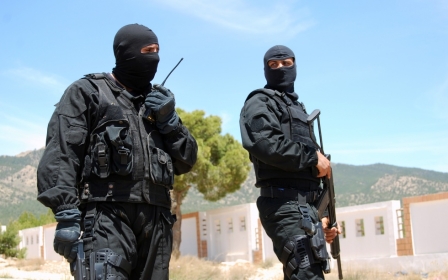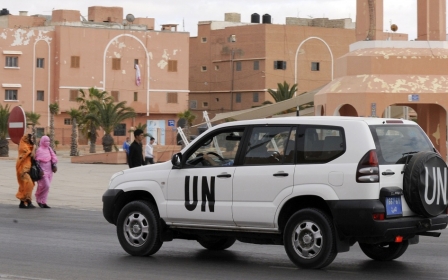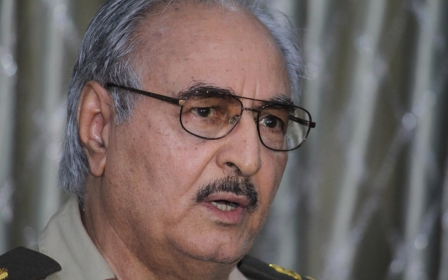Western 'counter-terror' forces militarise the Sahel

In 2003, former US defense secretary Donald Rumsfeld’s Pentagon published a series of maps of Africa which depicted the western Sahel (Mauritania, Mali, Niger, Southern Algeria, southern Libya, northern Nigeria and Chad) as a “Terrorist Corridor”.
While designed to demonstrate why Washington needed to take its global "war on terror" to North Africa, the maps were also part of the propaganda prepared by the Pentagon to support Rumsfeld’s Proactive, Preemptive Operations Group (P2OG). This was a covert program to provoke terrorist groups into undertaking violent acts, or to penetrate terrorist groups and local peoples to dupe them into conducting terrorist activities, often in the form of “false-flag” operations, in order to expose them or others to counterattack by US forces.
The most infamous P2OG operation in North Africa involved taking 32 European tourists hostage in the Algerian Sahara in 2003. Allegedly seized by “terrorists”, under the leadership of “Osama bin Laden’s man in the Sahara”, the operation was, in fact, a “false-flag” operation, managed on behalf of the US by Algeria’s Departement du Renseignement et de la Securite (DRS). It’s purpose was to justify the launch of the “Saharan-Sahelian front” in the "war on terror".
The front was launched in January 2004 through what former president George W Bush called the Pan-Sahel Initiative (PSI), with 1,000 US forces rolled into action across Mauritania, Mali, Niger and Chad. Local people called it the “American invasion”. At the time, I warned that it would lead to a regionwide conflagration.
That has now been achieved. One decade later, on 8 May, France’s Defence Minister Jean-Yves Le Drian announced that France was deploying 3,000 troops, in addition to 1,000 retained in Mali, to fight militant Islamists across the Sahara-Sahel, which he described as “the danger zone, the zone of all types of smuggling”.
Stay informed with MEE's newsletters
Sign up to get the latest alerts, insights and analysis, starting with Turkey Unpacked
“It is absolutely necessary to solve the problems and the dangers of trafficking and terrorism across the region, " said Drian "This area is key to the security of African states. But it is also for our own security. […] France is therefore reorganizing its forces to pursue counter-terrorism across several states.”
Equally disconcerting was Le Drian’s statement: “We will stay as long as necessary. There is no fixed date.”
French troops will be based in Mali, Niger, Chad and Burkina Faso, with more covert basing facilities available in Mauritania. In addition to its three major military bases at Gao in Mali, Niamey in Niger and N’Djamena in Chad, France is establishing a number of smaller bases, such as at Tessalit in northern Mali, Agades and Diffa in Niger, and Faya and Zouar in Chad.
The main difference between France’s operation and Bush’s PSI, apart from France deploying four times as many troops, is that unlike the PSI, it is not based on fiction. Rumsfeld’s “Terrorist Corridor” has become a self-fulfilled prophecy.
There are at least four reasons for France’s military expansion across the Sahel:
First: Operation Serval, the French military operation launched in January 2013 to liberate northern Mali from the “Islamist militants” or “jihadists”, as they are invariably known, has not been wholly successful. Although some 600 “jihadists” have reportedly been killed and probably the same number driven out of Mali into Libya, Algeria, Tunisia and Niger, they have not been entirely defeated or flushed out of the region. France therefore envisages keeping at least 1,000 troops in Mali.
Second: Mali is back in business as the hub for trans-Saharan drug trafficking (mostly cocaine from South America). The new Malian government of Ibrahim Boubakar Keïta is turning out to be as corrupt as its predecessor. The result is that drug trafficking, routing from Mali through Niger and Libya, is once again a threat to the region.
Third: there are credible “terrorist” threats to destabilise Chad. Intelligence sources believe that Algerian militant Mokhtar ben Mokhtar, now based in Libya, has his sights set on Chad in revenge for Chad’s military assistance to France in Operation Serval. Chad’s forces actually claimed to have killed Mokhtar in Mali in March 2013.
Fourth: both Niger’s eastern Diffa region and western Chad face the threat of instability and “terrorism” from the influx of both refugees and Boko Haram from northeast Nigeria. Boko Haram reportedly now has rear bases in both Niger and Chad.
However, within a week of Le Drian’s announcement, two unexpected events had placed France’s latest mission in a new perspective.
In Mali, renewed fighting between Tuareg rebels and Mali’s army resulted in the latter being put to flight and the rebels once again taking over much of Northern Mali. As a consequence, France has been obliged to delay its deployment of troops across the Sahel for “a few weeks”.
In Libya, rogue general Khalifa Haftar’s move to rid the country of Islamist militants looks like taking the country into civil war. The West is giving covert support to both Egypt’s former army chief and likely incoming president, Abdul Fattah al-Sisi and Algeria, whose armies are being positioned as two arms of a pincer to prevent Libyan Islamist militants infiltrating either country. Indeed, Egypt has already been talking of invading eastern Libya, while Algeria has reportedly deployed 40,000 troops along its Libyan border.
Although neither Egypt nor Algeria is likely to invade Libya, both are supplying Haftar with covert support. With French forces planning to take care of Libya’s Sahelian borders, the Libyan counter-revolution looks like being well under way.
However, perhaps the biggest danger to the entire Sahara-Sahel region, as in 2004, will come from the US. On 27 May, the New York Times confirmed what local sources have been saying for several weeks, namely that US Special Operation troops are engaged in a secretive program to form and train elite counterterrorism units in Libya, Mauritania, Mali and Niger.
Washington hopes that this new Africa programme, funded by classified Pentagon spending, will have better outcomes than the last. So too does almost everyone in the Sahel. The PSI involved the US in training Malian and Nigerien troops, but with little success. Both armies have a desultory record. While showing great prowess in killing civilians, they have turned tail on almost every occasion they have been confronted by rebel fighters. In Mali, American-trained commanders of elite army units even defected to the rebel forces.
The Sahara-Sahel region is heading into “difficult times”, along with the rest of the Arab world. But no one can say it was not predicted.
- Jeremy Keenan is a Professorial Research Associate at the School of Oriental and Africa Studies. He has written many book including The Dark Sahara (2009) and The Dying Sahara (2012). He acts as consultant on the Sahara and the Sahel to numerous international organisations, including the United Nations, the European Commission and many others.
The views expressed in this article belong to the author and do not necessarily reflect the editorial policy of Middle East Eye.
Photo Caption: Commander, U.S. Africa Command, Gen. Carter Ham appears before the House Armed Services Committee during annual testimony Feb. 29, 2012, in Washington, D.C. (Flickr/U.S. Navy)
Middle East Eye delivers independent and unrivalled coverage and analysis of the Middle East, North Africa and beyond. To learn more about republishing this content and the associated fees, please fill out this form. More about MEE can be found here.





